Picea abies
A European spruce originally planted for forestation
Picea abies Norway spruce
The Norway spruce was introduced from Europe and has become widespread in North America. It has naturalized to some degree but not enough to be considered invasive. It is more tolerant of hot humid summers than other spruce species and is disease resistant. It has needles that are mostly ½ to 1 inch long. The color varies from dark green to yellow green. The twigs are hairless or nearly so. This is the only spruce in our area that has branches that droop downwards as the tree grows over 20 feet tall.
The female cones of the Norway spruce are larger than other spruces - 3 to 7 inches long. These fall soon after maturity. Male cones are smaller. Seeds have a single wing. The tree can grow quite large - 60-90 feet and have a trunk diameter of 1-3 feet. In the far north or in high mountain areas it may grow like a mat near the ground. It is one of the most popular Christmas tree species, but the needles will dry up and fall off in about two weeks if not kept moist. The Christmas Tree at Rockefeller Center in New York is almost always a Norway spruce since the branches are strong enough to hold the many lights and ornaments. It is also planted as a windbreak because of its rapid growth rate.
The Norway spruce is a source of Burgundy pitch and valuable for lumber. The DNA of the Norway spruce has recently been sequenced and it six times the size of the human genome, mostly due to many transposed repetitive sequences. The value or purpose of this extra DNA is not known.
Habitat & Range
Grows in forest plantations and other cultivated sites; naturalized in the woods in moist rich soils.
Present throughout the state.
Wetland code: Not classified
Characteristics
Tree pyramid-shaped, trunk single, branches drooping or weeping
Needles single, deep blue-green, stiff & pointed, four-sided, ½ to 1 in long
Twigs hairless, golden brown
Bark redish gray, with many round scales
Seed Cones papery and light brown, hang from branches, 3-7 in long
Height 60-90 feet avg. height, can grow over 100 feet
Fall Color evergreen
Age 150-200 yrs
Identification Tips
Branches are drooping
Plant Codes
S-rank: No Rank
G-rank: G5 (Secure)
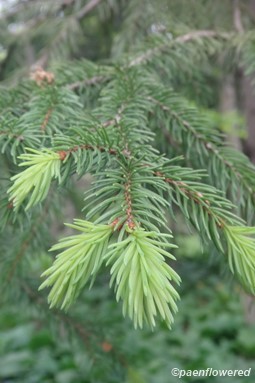

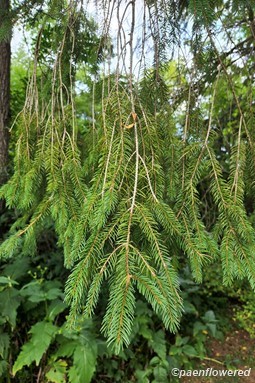

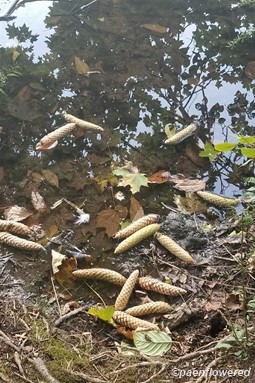
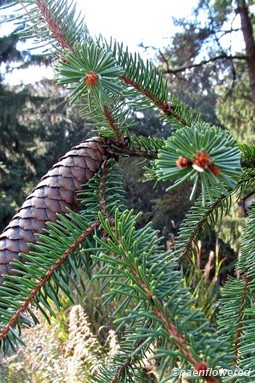
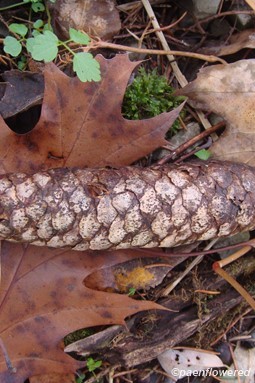





Comments
Have you spotted this plant in your area? We'd love to hear about your experience! Share your comments or questions about the plant below. Comments are moderated before posting.